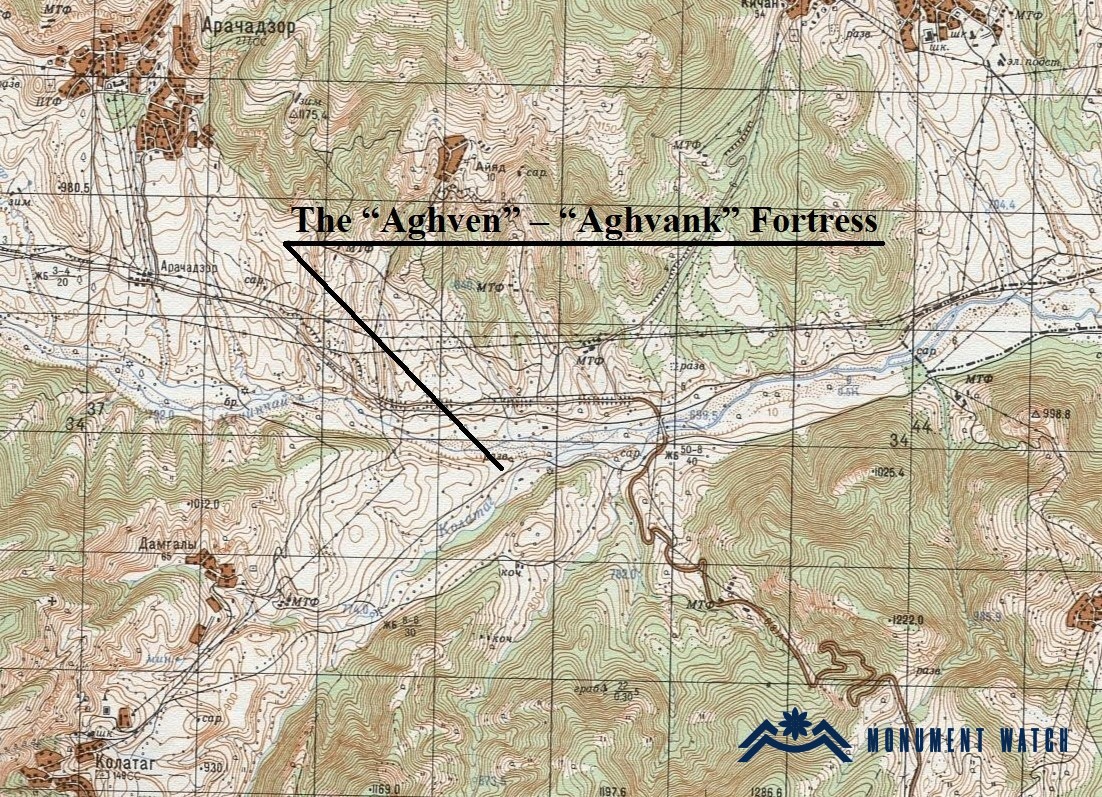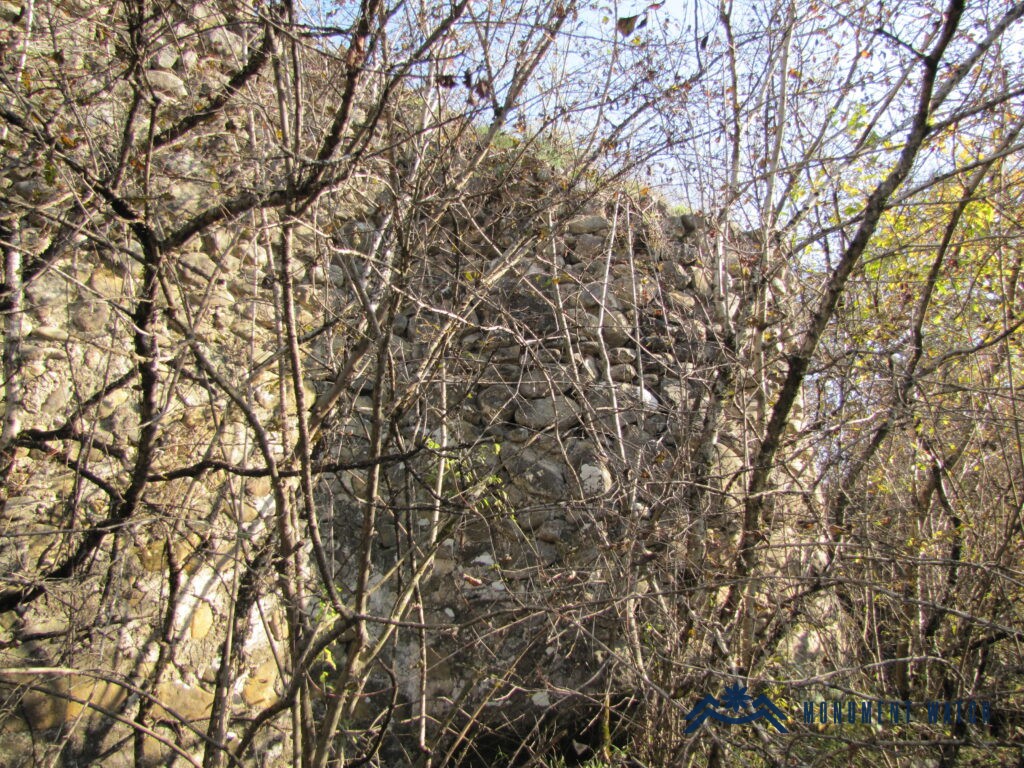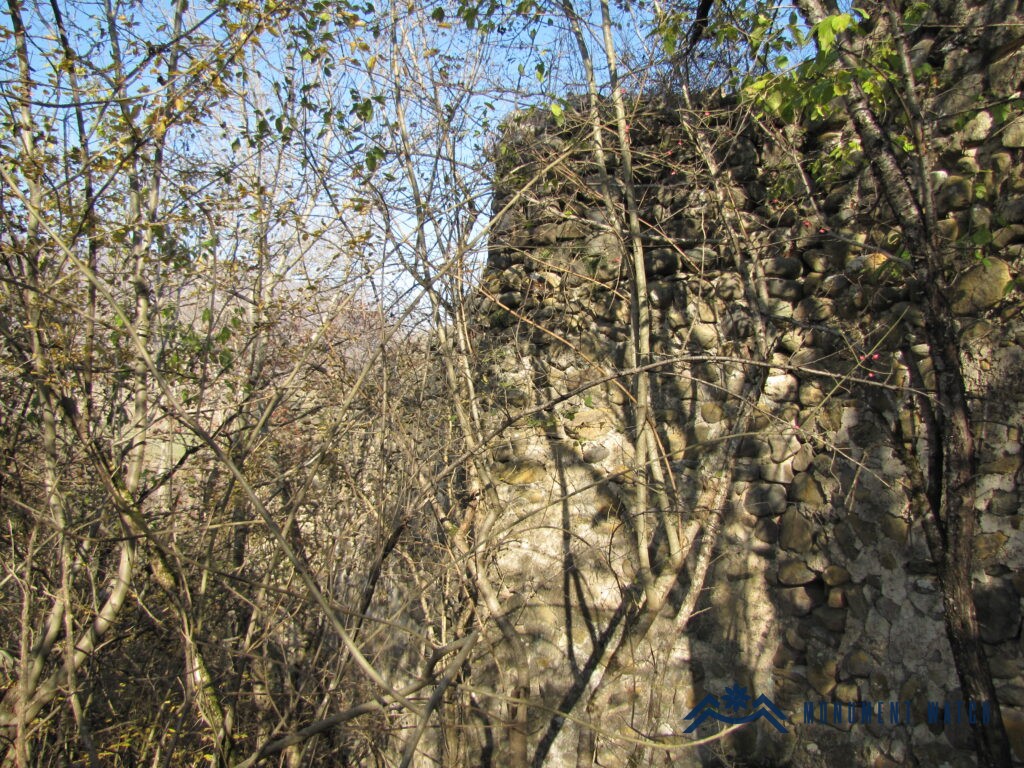The “Aghven” – “Aghvank” Fortress
Location
The fortress is located 2.6 kilometers northwest of the village of Tblghu in the Martakert region of the Republic of Artsakh. It has been under Azerbaijani occupation since September 2023.
Historical overview
This fortress is referred to as “Aghuank” by M. Barkhutaryants, but unfortunately, it does not have any citations from written sources or further explanation. Discussing Kachaghakaberd, the researcher notes that at its foot lies the “Aghuan Wall”:
“We could not determine why this ancient wall, situated at the confluence of the Khachen River and the Kolatak Stream, is called Aghuank, despite our best efforts. … The wall was built in a defensive position to prevent the enemy from gaining access to the water-bearer.”
(Barkhutareants 1895, 198).
From this, one may infer that the local Armenian population referred to the fortress as the “Aghuank Wall.”
According to S. Sargsyan,
“This fortress is historically renowned for its canonical constitution, ratified by King Vachagan the Pious. In the late 5th century, a secular ecclesiastical assembly was convened here in the king’s summer residence to employ legal measures to resolve the many conflicts among laypeople and clergy, as well as among nobles and warriors.”
(Sargsyan 2002, 55)
The researcher's supposition that this could be the well-known Aghven fortress still requires more detailed substantiation.
Sh. Mkrtchyan mentions the monument under the name “Spitak Pat” (meaning “White Wall”), noting that:
“‘Spitak Pat’ is located east of the village of Kolatak, at the confluence of the Khachen and Kolatak Rivers. In the 13th century, a fortress stood here, of which only a small wall section remains.” (Mkrtchyan 1989, 24).
Architectural-Compositional Examination
In the certificate of the National Museum of the Republic of Armenia and S. Sargsyan’s work, the monument is described as follows:
“The Aghven fortress is mainly built of river stones and limestone. The fortress wall measures about 86 meters in length, although more than 20 meters are destroyed (only traces remain). It extends in a north-south direction for 66 meters, then bends southeast for 6 meters, continuing to the southern edge of the canyon from which the Kolatak River flows. Most likely, the main entrance to the fortress is located at this bend.” (Sargsyan 2002, 59; National Museum of the Republic of Armenia certificate)
Currently, the fortress wall is preserved to a height of 3.5-4 meters, reaching 7-8 meters in its central-and particularly its northern-sections. The wall’s thickness is between 1.8 and 2 meters. It is supplemented by eight towers and half-towers, which were naturally integrated to provide the fortress with enhanced defensive strength and combat capability (see Figs. 1-4). Two of these towers are completely ruined; initially, they measured 2.9-3 meters thick in the central part of the wall and 3.5 meters or more in the peripheral sections, especially in the areas adjacent to the Khachen and Qolatak rivers (Sargsyan 2002, 59; Certificate of the National Museum of Archaeology of the Republic of Armenia).
The masonry-composed of medium and small bluestones, river stones, and crushed stone-along with the extensive external plastering strongly suggests that the current structure likely dates back to the relatively later 12th-13th centuries. However, this conclusion could be further refined with detailed archaeological research, which has not yet been carried out.
The condition before, during, and after the war
The monument was in good condition before the war. There is no information about the current condition of the monument.
Bibliography
- Barkhutareants 1895 - Barkhutareants M., Artsakh, Baku.
- Mkrtchyan 1989 - Mkrtchyan Sh. Historical and architectural monuments of Nagorno-Karabakh, Yerevan.
- Sargsyan 2002 - Sargsyan S., the fortresses of Khachen, Stepanakert.
- Certificate of the Ministry of Education, Science, Culture and Sports of the Republic of Artsakh - Certificate of the Ministry of Education, Science, Culture and Sports of the Republic of Artsakh.
The "Aghven" - "Aghvank" Fortress
Artsakh




